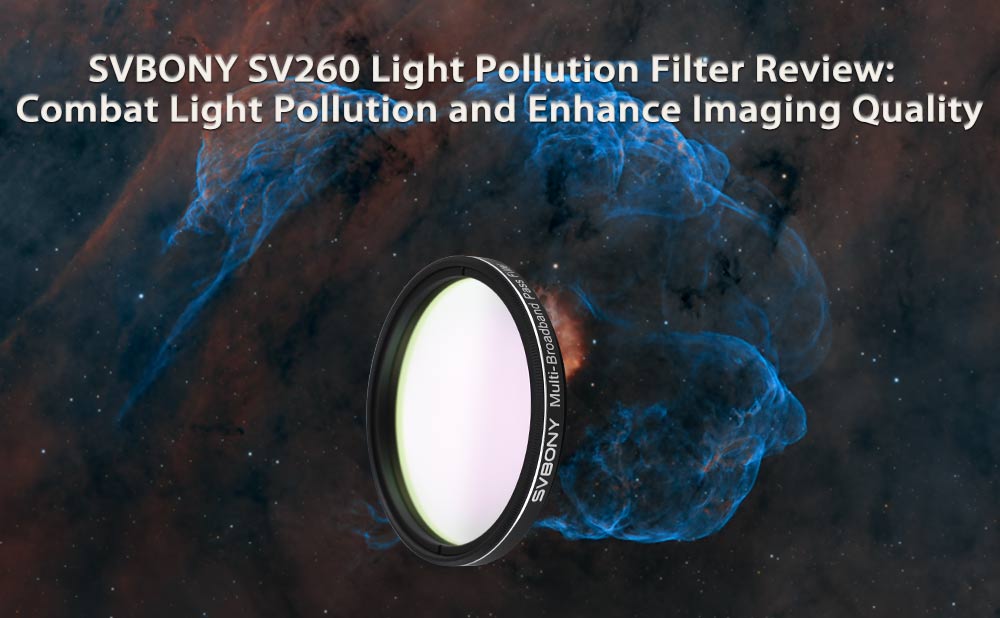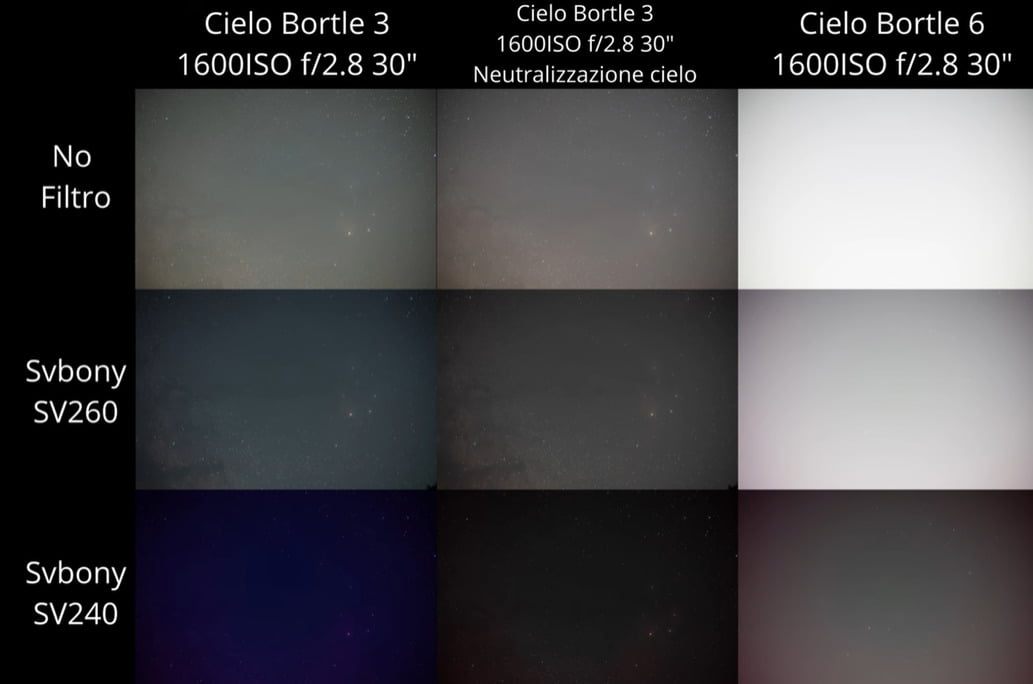Table of Contents

SVBONY SV260 Light Pollution Filter Review: Combat Light Pollution and Enhance Imaging Quality
Hello everyone,today, we're going to talk about a very useful light pollution filter—the SVBONY SV260 Multi-Bandpass Filter. It's part of SVBONY's range of light pollution filters, designed specifically to improve astronomical imaging, especially in heavily light-polluted urban environments. Since Valerio has reviewed this filter, let’s take a closer look at the performance of this filter and how it can improve your astrophotography!
Basic Features of the SV260
The SV260 is a broadband filter that works by blocking light pollution at certain wavelengths, enhancing the overall quality of your images. Compared to the previous SV220 dual-band filter and SV240 multi-narrowband filter,the SV260 allows nearly the entire visible spectrum to pass through while blocking only the worst sources of light pollution.
Key Features:
Five transmission bands: The SV260 filter has five transmission bands, covering wavelengths from 300 nm to over 1000 nm, from UV to near-infrared.
Applicable range: It is suitable for urban environments with significant light pollution, particularly in Bortle 3 to Bortle 6 skies.
OD value: The filter has a very high level of selectivity, with an OD value of up to 4 (extremely high light pollution rejection). The UV and infrared rejection is especially noticeable.
Suitable Environments:
This multi-bandpass filter is perfect for astrophotographers who need to fight light pollution in moderately polluted areas. It works well for people shooting in Bortle 3 to Bortle 6 skies. Compared to the SV240, the SV260 is more suited for use in slightly clearer sky conditions, especially in mountain or remote areas away from city lights.
SV260 vs Other Filters
SV220 and SV240 Filters:
SV220: This is a dual-band filter that focuses on Hα and OIII bands, ideal for capturing emission nebulae. It's especially useful in heavily light-polluted Bortle 8 areas. The filter's bandwidth is narrow, effectively cutting out light pollution, but it's limited to specific targets like emission nebulae.
SV240: A multi-band filter that supports imaging a wider variety of objects, such as emission nebulae, reflection nebulae, and dark nebulae. It's suitable for light-polluted Bortle 8 skies and covers a broader range than the SV220.
Advantages of the SV260:
Compared to the SV240 Multi-Narrowband Filter, the SV260 has several important design changes:
Broadband filtering: The SV260 5-bandpass filter can be used in Bortle 3 to Bortle 6 skies, making it suitable for a wider variety of astronomical objects, such as galaxies, reflection nebulae, and more.
Higher transmission rate: The SV260 boasts a transmission rate of up to 90%, meaning it can still produce great results even in areas with moderate light pollution.
Color and contrast: It effectively boosts contrast in images, especially when capturing interstellar dust and reflection nebulae.
Practical Testing
To test the performance of the SV260, Valerio selected two different astrophotography locations.
Scene 1: Bortle 5 to Bortle 6 Sky
In this environment, Valerio used a 105mm lens with a full-frame camera. First, he took a photo without any filters, and the image was obviously affected by light pollution, with a very bright background.
Then, Valerio inserted the SV260 filter, and the effect was immediate - light pollution was significantly reduced, contrast was enhanced, and details were richer.
Next, he tried the SV240 filter. While it also performed well in reducing light pollution, it introduced some color gradients, especially near the edges of the image.

Scene 2: Bortle 3 Sky
In clearer skies, the SV260's performance really stood out. Using a setting of ISO 1600, f/2.8, and 30-second exposures, the results showed almost no color shift, and the background remained clean, with the details of the objects becoming more defined. Compared to the unfiltered image, the SV260 significantly improved both contrast and sharpness.
In contrast, the SV240 narrow filter also performed well, but due to its stronger light pollution suppression, it caused some loss of detail, especially when capturing reflection nebulae.

Conclusion
The SVBONY SV260 light pollution filter is a highly effective tool in moderately light-polluted environments. Not only does it perform excellently in Bortle 3 to Bortle 6 skies, but it also significantly improves the sharpness and contrast of your images, making it perfect for capturing a variety of objects like galaxies, reflection nebulae, and more.
For those shooting in areas with severe light pollution (Bortle 8), the SV220 and SV240 are better options. But for astrophotographers working in slightly clearer skies, the SV260 is definitely a filter worth investing in.
If you're looking to improve your astrophotography and reduce the impact of light pollution, the SV260 offers excellent value and impressive results!
Thanks to Valerio for the insightful review of the SVBONY SV260 filter. If you want to learn more, you can click the link to watch it.


There are no customer reviews yet . Leave a Reply !